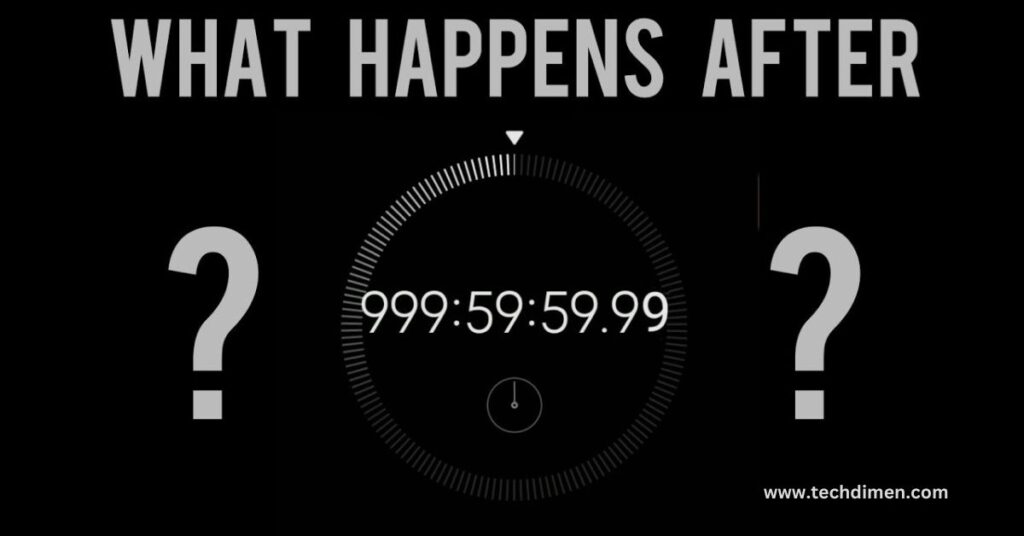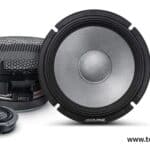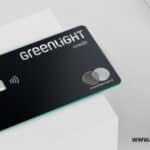Time is a universal constant that governs every aspect of life. Breaking it into smaller units like seconds allows us to appreciate its subtle influence. 999 seconds may seem insignificant at first glance, but its potential is astounding when explored deeply. Whether you’re curious about its exact length, historical relevance, or practical applications, this article will uncover the many layers of understanding how long is 999 seconds in an engaging and meaningful way.
the Length of 999 Seconds

To grasp the essence of its, we must first convert it into familiar time formats, such as minutes and hours.
Seconds to Minutes Conversion
999 seconds can be converted into minutes using a simple formula: divide the total seconds by 60, as there are 60 seconds in a minute.
Calculation:
999 ÷ 60 = 16 minutes and 39 seconds
Thus, 999 seconds in minutes is approximately 16 minutes and 39 seconds.
Seconds to Hours Conversion
To convert seconds into hours, divide the total seconds by 3,600 (the number of seconds in an hour).
Calculation:
999 ÷ 3,600 = 0.2775 hours
This means 999 seconds in hours is just over a quarter of an hour.
Time Conversion Table

The table below illustrates how 999 seconds fits into other time measurements:
| Time Format | Equivalent of 999 Seconds | Example Use |
|---|---|---|
| Seconds | 999 seconds | Short timed experiments or reactions |
| Minutes | 16 minutes, 39 seconds | A quick workout session or planning task |
| Hours | 0.2775 hours | Approx. 17% of an hour |
| Milliseconds | 999,000 milliseconds | Used in precise scientific timing |
| Days | 0.01157 days | Equal to a fraction of a 24-hour day |
This breakdown helps contextualize the value of its across different time formats.
Historical Context
Historical context refers to the circumstances, events, and cultural environment that shaped a particular period in history. It helps us understand why things happened the way they did and how different factors influenced decisions, actions, and outcomes. Understanding historical context is crucial when studying any topic, as it offers deeper insights into the events, people, and movements of the time.
The Importance of Historical Context
History doesn’t just happen in a vacuum. It unfolds against a backdrop of social, political, economic, and cultural forces. To fully grasp the significance of an event or movement, we must consider the broader environment that influenced it. For example, understanding the social unrest during the Industrial Revolution helps us comprehend the rise of labor movements and changes in working conditions.
Historical context allows us to:
- Recognize the causes and effects of events.
- See the connections between different historical moments.
- Understand the values, beliefs, and motivations of people at the time.
- Appreciate how historical figures were shaped by their environment.
Political and Social Context
In every period, politics and society intertwine. Government systems, ideologies, and leadership styles directly influence the direction of events. For instance, understanding the political climate during the American Revolution helps explain why colonists fought for independence and what they hoped to achieve.
Key elements in political and social context include:
- Political systems: Monarchies, republics, or democracies each have unique influences on how societies develop.
- Social structures: Class divisions, gender roles, and racial hierarchies shape interactions and opportunities.
- Ideologies and movements: Revolutions, reforms, and wars often arise out of specific political contexts (e.g., the French Revolution’s emphasis on equality and liberty).
Economic Context
The economic state of a region or country plays a pivotal role in shaping history. Economic prosperity or hardship influences the actions of individuals, governments, and organizations. For example, the Great Depression of the 1930s influenced social policies, labor movements, and global politics.
Economic factors to consider:
- Trade and commerce: The rise of international trade and the movement of goods and people can spark wars, alliances, or revolutions.
- Wealth distribution: Disparities in wealth can lead to social unrest or calls for reform.
- Technological innovations: The introduction of new technologies can revolutionize industries and the workforce (e.g., the Industrial Revolution).
Cultural and Religious Context
Culture and religion have often been driving forces behind historical events. From wars fought over religious differences to artistic movements that challenge societal norms, culture shapes the way people live, think, and act.
Cultural and religious factors include:
- Beliefs and values: Religious movements like the Reformation had profound effects on European society.
- Art and literature: The Renaissance, for example, shifted Europe’s focus toward humanism and creativity, influencing political and social change.
- Traditions and customs: Rituals, social norms, and historical myths can shape national identities and influence policy decisions.
Technological Context
Technological advances often change the course of history. From the invention of the printing press to the development of the internet, new technologies can alter everything from communication to warfare. For example, the invention of the steam engine fueled the Industrial Revolution, changing economies and labor systems worldwide.
Examples of how technology impacts historical context:
- Military technology: Advancements like gunpowder, tanks, and airplanes have reshaped warfare and diplomatic relations.
- Communication technologies: The printing press, radio, and internet have allowed ideas to spread more widely, sparking social movements and revolutions.
- Scientific discoveries: Breakthroughs like the theory of evolution or the discovery of electricity have revolutionized society and thought.
Case Studies: Understanding Historical Context
The American Civil War: A Political and Economic Struggle
The American Civil War (1861-1865) is a perfect example of how historical context can shape an event. The war wasn’t just about slavery; it was about political ideologies, economic interests, and social structures. The Northern economy, which was more industrial, clashed with the Southern, which relied on agriculture. At the heart of the conflict was the question of states’ rights and federal control.
The Fall of the Roman Empire: Social and Economic Decline
However, understanding the cultural shifts, like the rise of Christianity, and the economic instability caused by excessive military spending, gives a fuller picture of the empire’s collapse.
Famous Historical Events
- Apollo 11 Lunar Descent:
On July 20, 1969, the Apollo 11 spacecraft performed a lunar descent lasting about 12 minutes and 30 seconds, remarkably close to 999 seconds. This brief interval marked humanity’s first steps on the Moon and remains a symbol of innovation and exploration. - Titanic’s Radio Contact:
After the Titanic struck an iceberg on April 14, 1912, its crew spent critical minutes transmitting distress signals. Within 999 seconds of the collision, key communications began, which played a role in coordinating rescue efforts. - First Motion Picture Scene:
The Lumière brothers’ Arrival of a Train at La Ciotat (1895), a groundbreaking cinematic moment, lasted under 16 minutes, demonstrating how short time intervals can create lasting cultural impact.
Time Conversion in Historical Context
The table below connects significant historical moments to the equivalent of 999 seconds:
| Historical Event | Duration in Seconds | Duration in Context |
|---|---|---|
| Apollo 11 Lunar Descent | 750 seconds | Nearly 12.5 minutes |
| Titanic’s Early Radio Contact | 900-1000 seconds | Critical early distress communication |
| Gettysburg Address | 180 seconds | A historic speech delivered in under 3 minutes |
| Shortest Olympic Sprint Record | 10 seconds | Achieved by elite sprinters |
These events highlight how even brief moments of time have shaped historical narratives.
Everyday Applications
What Can You Do in 999 Seconds?
Understanding how to use its efficiently can help unlock productivity in your daily life. With roughly 16 minutes and 39 seconds available, here are several practical time management applications:
Time for Fitness
its offers a perfect duration for short, focused workouts. A high-intensity interval training (HIIT) session, yoga flow, or stretching routine can be completed within this timeframe.
Relaxation and Mindfulness
Mindfulness practices like guided meditation or deep breathing exercises align perfectly with the 16-minute interval. For instance, the “4-7-8” breathing technique can be repeated for optimal relaxation.
Entertainment
Many activities fit within 999 seconds, such as listening to two short podcast episodes or enjoying a music playlist featuring songs lasting approximately five minutes each.
Scientific and Technological Applications

Scientific processes in seconds often depend on the precision timing provided by intervals like 999seconds. Examples include:
- Running computer algorithms for data simulations.
- Conducting time-sensitive chemical reactions in laboratories.
- Monitoring industrial equipment cycles.
Fun Facts About 999 Seconds
The significance of its extends beyond its practical uses. Here are some entertaining facts and insights into its versatility:
- Longest Popular Songs:
Several extended live versions of songs, such as Stairway to Heaven by Led Zeppelin, approach or exceed 16 minutes, showcasing how its in minutes can contain iconic musical moments. - World Records in 999 Seconds:
Competitive eaters and Rubik’s cube solvers have achieved world records in durations under its, emphasizing the power of short, focused efforts. - Movie Scenes Lasting 999 Seconds:
Famous single-shot movie scenes, like the opening of Spectre (2015), last approximately 16 minutes, showcasing the dramatic potential of this duration.
Maximizing its for Productivity

Certainly! Here’s a more detailed breakdown of Timer-Based Challenges with headings for clarity.
Introduction to Timer-Based Challenges
Timer-based challenges are activities or tasks where participants must complete certain objectives within a set period of time. These challenges are designed to test speed, efficiency, and decision-making abilities, often adding an element of pressure or excitement. They are commonly used in competitive environments, skill development, and even in casual or gaming contexts.
Timer-based challenges can be found in a variety of settings, including:
- Sports and fitness: Races, workout challenges, or skill tests.
- Games and competitions: Puzzle games, escape rooms, or timed trivia.
- Business and learning: Time-sensitive tasks in workshops, team-building exercises, or exams.
The Appeal of Timer-Based Challenges
The Element of Pressure
One of the core aspects of timer-based challenges is the pressure they create. Participants know they have limited time to complete the task, which can elevate the challenge’s intensity. The clock ticking away can drive participants to push their limits, think faster, and make quicker decisions, often revealing the extent of their skill or creativity under pressure.
Enhancing Focus and Efficiency
Timer-based challenges also enhance focus. Knowing that time is running out can help participants concentrate more effectively on the task at hand. This often results in a surge of productivity or creativity, as the desire to succeed within the time limit forces people to make swift choices and execute them without overthinking.
The Thrill of Competition
Timer-based challenges are often used in competitive settings because they level the playing field. Everyone has the same amount of time, and the person or team who completes the task the fastest or with the best results wins. This creates a thrilling atmosphere and motivates participants to perform at their best.
Types of Timer-Based Challenges
Physical Timer-Based Challenges
In sports and fitness, timer-based challenges can be seen in activities like sprint races, timed workouts, and obstacle courses. These challenges are often used to improve endurance, speed, or skill in a particular activity. For example:
- Sprint races: Timed events where the fastest runner wins.
- Crossfit challenges: Participants must complete a series of exercises (like lifting or jumping) within a specific time frame.
- Obstacle courses: Timed races that test agility and problem-solving skills.
The goal is to measure physical performance under pressure while encouraging participants to improve their speed and efficiency.
Mental Timer-Based Challenges
Mental timer-based challenges are tasks that require participants to complete cognitive tasks within a set time limit. These challenges test problem-solving abilities, creativity, focus, and quick thinking, often under pressure. Unlike physical challenges, which test endurance or strength, mental challenges require a high level of cognitive function to solve problems, answer questions, or complete tasks as quickly and accurately as possible.
These challenges are often used in competitive settings, educational environments, or casual games. They’re not only engaging but also help improve mental agility, memory, and decision-making skills.
Types of Mental Timer-Based Challenges
Puzzle Challenges
Puzzle challenges are one of the most common forms of mental timer-based challenges. Participants are given a puzzle to solve within a set time frame. These challenges can vary greatly in terms of complexity and style, but they all require the solver to think critically and use logic.
Some examples include:
- Sudoku: Solving Sudoku puzzles within a time limit, either in print or on apps.
- Crossword puzzles: Completing a crossword puzzle as quickly as possible without sacrificing accuracy.
- Jigsaw puzzles: Assembling a picture puzzle in a limited time frame, often with an added element of competition (e.g., “who can do it the fastest”).
Puzzle challenges are great for testing mental endurance and the ability to stay focused under pressure.
Trivia Games
Trivia games are another popular form of mental timer-based challenge. Participants are required to answer a series of questions as quickly as possible, often with a countdown clock ticking away in the background. The key to success in trivia is a combination of knowledge and speed. Some popular examples include:
- Online trivia competitions: Websites or apps where participants race against time to answer general knowledge questions.
- Game show formats: Many TV game shows, like Jeopardy! or Who Wants to Be a Millionaire?, include timer-based challenges where contestants must answer within a set time to earn points or money.
- Pub quizzes: In a more casual setting, pub quizzes feature timed rounds where participants need to answer questions quickly to win.
Trivia games push participants to retrieve information from memory while making quick decisions. The added element of time pressure can make even easy questions feel more challenging.
Brain Teasers and Riddles
Brain teasers and riddles are designed to make participants think creatively and logically. In a timed challenge, these riddles or puzzles need to be solved within a specific time limit. The goal is to test mental flexibility, problem-solving skills, and the ability to work quickly while thinking outside the box.
Examples of timer-based brain teasers:
- Math riddles: Complex problems that require both speed and precision.
- Logic puzzles: Challenges that test the ability to reason and think through a problem methodically, such as finding patterns or completing sequences.
These types of challenges are great for sharpening both analytical and creative thinking skills.
Speed Reading and Comprehension
In speed reading and comprehension challenges, participants are asked to read a passage or a set of information quickly, then answer questions based on the text. The timer encourages participants to absorb information at a faster rate, making it an excellent test of both reading skills and memory retention.
These challenges often take the form of:
- Timed reading tests: Reading a passage or article and answering comprehension questions in a set amount of time.
- Book or article challenges: Certain apps or competitions might ask readers to finish a certain number of chapters or articles within a given period and then answer questions or summarize the content.
Speed reading challenges help improve mental processing speeds and focus, while also testing the ability to recall information accurately under pressure.
Mental Math Challenges
Mental math challenges require participants to solve mathematical problems without the aid of a calculator or paper and pencil. The twist is that they must solve the problems within a short time limit, adding an element of pressure.
Examples of mental math challenges:
- Timed arithmetic problems: Solving addition, subtraction, multiplication, and division problems as quickly as possible.
- Timed algebra or geometry problems: More advanced challenges that might involve solving equations or identifying geometric properties within a set time frame.
These challenges sharpen quick-thinking abilities, mathematical reasoning, and focus.
Benefits of Mental Timer-Based Challenges
Cognitive Skill Development
One of the major benefits of mental timer-based challenges is the enhancement of cognitive skills. Regular participation in these challenges can help improve mental agility, focus, and problem-solving abilities. By working within time limits, participants also learn to prioritize and make decisions quickly, which can benefit them in real-life scenarios.
Stress Management
Mental timer-based challenges often introduce an element of stress, forcing participants to work under pressure. Over time, these challenges can help individuals build resilience and learn to manage stress more effectively. The more someone practices thinking under pressure, the more capable they become of handling high-stress situations in other areas of life, such as in their careers or studies.
Improved Memory and Focus
Timer-based challenges can also help enhance memory and concentration. Many of these challenges require participants to recall facts or information quickly. The added time constraint forces individuals to rely on their memory and stay focused on the task at hand. This has a beneficial effect on long-term cognitive health and performance.
Enhanced Problem-Solving Skills
Timer-based mental challenges push individuals to solve problems creatively and efficiently. Since participants are forced to think quickly, they learn to recognize patterns, identify solutions rapidly, and apply strategies effectively under pressure. This is particularly useful in fields where quick decision-making is essential, such as business, engineering, and even emergency situations.
Popular Platforms for Mental Timer-Based Challenges
Lumosity
Lumosity is a popular brain training app that offers various mental challenges, from memory games to speed math challenges. Many of the tasks are timer-based, with users racing against the clock to solve problems. It’s widely used for improving cognitive functions like memory, focus, and problem-solving skills.
BrainBashers
BrainBashers is another platform that features a wide range of puzzles and brain teasers, many of which include time limits. Users can play challenging games, solve riddles, and test their mental capabilities in timed settings.
Trivia Apps
Apps like QuizUp and Trivia Crack offer timed trivia games where users can compete against each other to answer questions in a limited amount of time. These games not only test knowledge but also promote fast thinking and decision-making.
Game-Based Timer Challenges
In gaming, timer-based challenges are incredibly popular. Many video games feature time-sensitive tasks, such as racing games, action games, or even time-attack modes in role-playing games (RPGs). The challenge usually revolves around completing a level, mission, or series of objectives as quickly as possible. Examples include:
- Speedruns: Players attempt to complete a game or level as quickly as possible, often competing for the fastest time.
- Time trials: Players must finish a course or challenge within a set time limit to beat the clock and achieve the best score.
- Survival mode: Many games have survival modes where players must fend off waves of enemies or survive for a specific duration, testing both strategy and endurance.
These challenges often create a competitive environment where players push themselves to improve their strategies and skills, as they are repeatedly measured against time.
Benefits of Timer-Based Challenges
Improved Performance Under Pressure
One of the key benefits of timer-based challenges is that they help participants improve their ability to perform under pressure. Whether in sports, business, or games, working within time constraints forces people to focus, adapt quickly, and make decisions without hesitation. This can help improve performance in real-world scenarios where deadlines and time management are crucial.
Development of Time Management Skills
Timer-based challenges teach valuable time management skills. When participants know they have a limited window of time, they must prioritize tasks, allocate resources efficiently, and execute their strategies in an organized manner. This ability to manage time effectively is transferable to many areas of life, such as work, study, and personal goals.
Enhanced Teamwork and Collaboration
In team-based timer challenges, collaboration becomes critical. Teams must communicate and coordinate their actions efficiently to complete the task within the time limit. These challenges foster teamwork, helping participants learn how to distribute tasks, share responsibilities, and solve problems together while under pressure.
Popular Examples of Timer-Based Challenges
The Amazing Race
One of the most famous timer-based challenges in the world is the reality show The Amazing Race. Teams of two race across different countries, completing challenges within set time limits. The race combines both mental and physical challenges, requiring teams to think quickly and work together under pressure.
Escape Room Games
Escape rooms are another popular form of timer-based challenge. Players must solve puzzles, find clues, and unlock hidden secrets to “escape” before time runs out. These games require sharp problem-solving skills, teamwork, and the ability to stay calm under pressure.
Hackathons
In the tech world, hackathons are timed events where participants must build a working software or hardware prototype within a limited time. These challenges encourage rapid ideation, coding, and problem-solving, pushing participants to innovate under a strict deadline.
Time Management Tools
Using timers like Pomodoro apps or traditional stopwatches helps structure time blocks of approximately 16 minutes for increased focus and efficiency.
FAQs
How Many Minutes and Seconds is 999 Seconds?
its 16 minutes and 39 seconds.
How Long is 999 Seconds in Hours?
Its equals 0.2775 hours, slightly over a quarter of an hour.
What Are Some Significant Events That Happened in 999 Seconds?
The Apollo 11 lunar descent and Titanic’s early radio transmissions are examples of historic events unfolding in or near 999 second.
What Practical Tasks Can Be Accomplished?
Tasks like completing a light workout, responding to emails, or preparing a simple meal are achievable in this timeframe.
How Can I Convert 999 Seconds to Days?
To convert seconds to days, divide 999 by 86,400 (the number of seconds in a day). The result is approximately 0.01157 days.
Conclusion
Time is both fleeting and powerful, as demonstrated by the significance of 999 seconds. Whether you’re marveling at its historical importance, harnessing it for productivity, or enjoying its fun and practical applications, understanding how long is 999 seconds offers a new perspective on the value of short time intervals. Let this guide inspire you to make the most of every moment, proving that even its can leave a lasting impact.

Jhon AJS is a tech enthusiast and author at Tech Dimen, where he explores the latest trends in technology and TV dimensions. With a passion for simplifying complex topics, Jhon aims to make tech accessible and engaging for readers of all levels.







